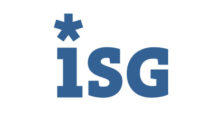Social Media Management: “Marketing and IT have to cooperate!”
In recent years the term digital customer experience has become increasingly important in marketing. Whether offline or online – the customer requires an intense and unbroken brand experience across all channels. Thus, an integrative and well coordinated communication concept on social media becomes essential. As part of the study “ISG Provider Lens Social Business 2018”, the consulting firm ISG analyzes the portfolio of software providers for social media management.
Information Services Group (ISG) is one of the leading market research and consulting companies in the information technology segment. Founded in 2006, the company is known for its expertise in innovative technological solutions. And these are now in demand in the area of marketing. This is because the required integration into marketing automation and customer relationship management (CRM) as well as the customer data management complicate the selection of a suitable social media management tool. ISG takes a closer look at the software tools available to you.
Basic functionalities and upcoming trends
A first study of existing offers shows that many functions are already standard. For example, functionalities such as multilingualism and internationalization, ticketing and multi-user management, content management, planning of visual stories, automated integration of monitoring data, simple analysis functions and archiving.
This fiscal year is all about using ChatBots in messenger services. So far, some providers have difficulties integrating this feature in their tool, due to the divergent structure of messengers. In the future, software providers also want to make use of artificial intelligence and use it to, for example, increase speed and quality in decision making and to identify relevant discussions.
Classification of providers
Overall, the market comprises four groups of providers.
1. Providers of Marketing Automation Suites
They extend their functionality to social media management and rely on a strong integration of social media management in marketing automation and campaign management.
One drawback: Due to the low flexibility, the user gets locked in.
2. Providers of Social Media Management
They supplement their offer with marketing automation functionalities. However, these solutions are inferior to those of established providers, especially in terms of functional scope. For both groups of providers, the problem is that they enter densely populated areas with their functional expansion: There are already specialized and established providers in both areas. When expanding in one of these directions, you either lag behind established providers in terms of functionality or you try to provide too many tools in a very flexible market environment, which development often can not handle.
3. Providers of integrable social media management tools
They create social media management functions that interested partners can integrate into their existing tools using API. The success of this provider group is linked to the condition that in the long term, a sufficiently large partner network is created, which does not aim to expand its own functional scope, but rather relies on existing solutions from third-party providers.
4. Providers for sub-areas of social media management
They offer optimized, individual functions such as visual storytelling. However, hardly any new tools are created here. Instead, a continuous market shakeout takes place via mergers and takeovers. It remains to be seen, which provider group will prevail on the market. In general, the fast-moving area of digital communication requires a high level of adaptability and speed on provider´s side. This can be achieved above all with a rather narrow functional range or alternatively with a broader base accompanied by correspondingly large development teams.
Data management and security as central challenge
Data keeping and security represent a central challenge in the selection of the respective tools . Especially the “as-a-service” use of some tools and the associated off-premise data management can create additional tasks for a companies´IT. The resulting data must be transmitted and stored securely. The storage of customer data and the security of data transmission are not only critical in terms of technology, the legal side must also be clarified. Overall responsibility is borne by the company that actually owns the customer data and uses the tool.
In general, the consciousness of this issue should further grow in the marketing area. Especially against the background of the new EU General Data Protection Regulation (DSGVO), more attention should be paid to data security. The legality of using customer data from the social media area must be ensured. It also needs to be clarified, which data is processed for which purpose and where it is stored.
According to ISG, especially small providers often do not adequately meet these demands so far. The data security issues could basically be solved by the newly offered tools. But only if the social media management, marketing automation and CRM systems are actually integrated in a way that they seamlessly merge.
Marketing and IT for a Digital Customer Experience
There is no universal social media tool that is equally suitable for all companies. The decision for a solution should be made individually on the basis of the requirements in the company, the state of automation in marketing and the goals.
However, the collaboration between marketing and IT should be strengthened and appropriate expertise in cloud computing and data management should be transferred to marketing departments. This not only prevents the emergence of shadow IT. It also drives the integration of marketing automation and social media management. Together with secure data management, this creates the basis for a consistent Digital Customer Experience.
Image Source: iStock / SonerCdem
[plista]


